Abstract 7/2012
Zofia Bryniarska
Exploitation of collective public transport stops in Krakow
The attractiveness of public transport network in urban areas depends not only on number of bus and tram routes and courses in this area but on the accessibility of public transport stops as well. The passengers make a choice of transport mode taking into account from one hand comfort of journey and from the other hand time they have to dedicate to travel. The minimization of the door-to-door travel time leads to discussion on access and egress distances. The description of collective public transport network in Krakow in the measures of space and demographic density and length of distances between stops is presented in the article. The classification of stops according to number of passengers getting in to trams and buses on typical workday is also presented. It is proven that there are only sixty stops (9%) where more than 68% of daily volume of passengers start or interchange their travels, so the high concentration of getting in passengers at stops is observed.
Keywords: passenger transport, public transport, public transport stop
Bartłomiej Derda, Aleksandra Pawlak- Burakowska
Analysis of international and regional air carriers market in Poland between 2009 and 2011
In this paper the analysis of the volume of the international and domestic aviation market have been presented. The main emphasis has been put on the air carriers that offer their services on the Polish market. The authors focused on the possibilities offered by this market to the carriers. The structure of passenger transport in Poland has also been discussed. It shows that in recent years the share of traditional and low cost operators in the market varies around 50%. The structure of international carriers – scheduled and charter – were also analyzed. The analysis of regional services in Poland has been discussed at the end of the article. Analysis performed in the article were based on data provided by the carriers and the airports authorities as well as the Civil Aviation Authority. Analysis shows that despite the strong concerns about the volume of air traffic caused by the crisis in recent years, the aviation market in Poland is constantly evolving. More widely promoted air services become competitive to other modes of transport, not only on the international routes, but on national as well. This is a very good news both for passengers and to regional airports, which together with the dynamic increase in the number of services can also develop.
Keywords: air transport, charter services, regular services, regional services
Krzysztof Płatkiewicz
Spatial variation of places of residence perpetrators of the accidents and road collision in Cracow
The main objective of the research was recognition of spatial variation of places of residence perpetrators of traffic incidents in Cracow. This is an innovate approach. It focuses on road safety issues which have not been yet expounded. The article is based on spatial analysis of data about place of residence of 577 perpetrators. These events have occurred in Cracow primarily on main traffic routes in 2010. Data has been collected by police officers of the Traffic Departments in Cracow. Data has been a random sample. The highest density of dwellings is in the North-West districts of Cracow with a maximum in the Krowodrza and Nowa Huta districts. The number of traffic incidents does not coincide with the number of perpetrators living in these districts. Unexpected is the nearly 36% of offenders residing outside the city. Among drivers causing accidents from outside Cracow most are residents of the Cracow Metropolitan Area. It is noted higher share of perpetrators living along Katowice – Cracow – Rzeszow communication section. The largest number of traffic incidents among residents of Cracow take place in the first 3 kilometers and 5 minutes but these factors are not proportional. Phenomenon of spatial interaction in Cracow generally refers to number of perpetrators converted to 10 000 inhabitants but there are noticeable exceptions.
Keywords: urban space, accidents, road collisions, safety
Tomasz Rokita, Paweł Wierzbicki
Conception of the modernization of the Goryczkowa Ropeway
This paper presents results of conceptual work on the project of modernization of the Goryczkowa aerial ropeway. Ropeways currently operating in the area of Kasprowy Wierch have been characterized, referring to the the history of construction, technological aspects and the main operational problems. The concept of modernization of the Goryczkowa ropeway has been detailed analyzed . Four possible alternative conceptions of ropeway routes, locations of upper and lower stations have been subjected to analysis taking into account the technological, economic, environmental (including the location on the area of the Tatra National Park) aspects and comfort of use. The conception also includes a potential course of the ski pistes after rebuilding the ropeway. For each variant the basic calculations were carried out which are necessary on the conceptual design stage. Also the visualization of the concept of the Goryczkowa ropeway modernization has been presented.
As the optimal variant of the modernization of the Goryczkowa ropeway a four seat detachable chairlift was selected. Various technical aspects taking into account ropeway speed, capacity and travel time between stations have been analyzed. Particular attention was paid to the safety of ropeway users and staff in accordance with requirements in this regard.
The construction of a new Goryczkowa ropeway, despite many difficulties, seems to be reasonable in order to meet expectations of potential users and to provide a wider range of ski areas, unique in our country.
Keywords: monocable aerial ropeways, chairlifts, ski transport
Beata Wieteska-Rosiak
Problems connected with the localization of multi-level parking on housing estates with prefabricated
Development of transport has caused an increase of the number of passenger cars. This phenomenon has contributed to the deepening problems of parking in the housing estates with prefabricated in large cities. More and more settlements suffer from problems associated with excessive numbers of vehicles parked next to the blocks. This fact causes worse a neighborhood traffic safety, blocking fire roads, pavements and green areas. It determines lower quality of life. The article is aimed at discussion on selected ways of proceeding by parties responsible for parking policy in urban areas. There are many various solutions, depending on the criterion of temporary measures. In the short term actions consist of taking over open space, green areas, playgrounds to construct single-level car parks and parking lots next to blocks. Among the long-term initiatives we can mention construction of multi-level car parks on housing estates. In this case, the number of parking spaces on housing estates is to be limited. However, there are various barriers associated with such an investment. Among the benefits of the release of housing estates from vehicles one can see improvement of road safety and the retrieval of recreational areas for children, young and old people.
Keywords: problems with parking, parking policy, housing estates with prefabricated, quality of life.
Andrzej Rudnicki, Adam Tułecki
Narrow-gauge railway between Piwniczna and Szczawnica municipalities as an instrument of integration for the Beskid Sadecki spas
The paper describes the project of European initiative EUREKA “Ecological mountain railway as an element of the sustainable development of a tourist region in Poland” joining the spas of Piwniczna with Szczawnica. After presentation of the project scope and the partners, the towns which are served and linked by planned narrow–gauge railway have been characterized. Reflection of an idea for the railway in the existing strategic and planning documents has been identified. Functions of the railway and its situational and altitude alignment of its route are specified. The vehicle of the railway and the rules and examples of schedules are generally characterized. The rules for construction of prognostic passenger flows by rail are described and selected results are quoted. The conclusions from the analysis of the environmental impact of the railway and the result of financial and economic analysis are presented. The paper concludes with the list of the expected main effects of the project and its potential impact on the development of transport technology.
Keywords: local public transport, narrow–gauge railway, functional and spatial integration, tourism and spa towns

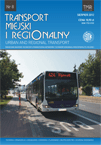 SITK RP
SITK RP 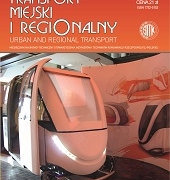
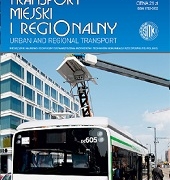 SITK RP
SITK RP 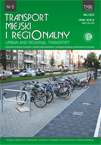 SITK RP
SITK RP 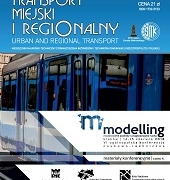
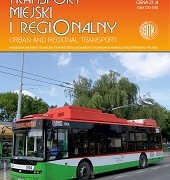

 SITK RP
SITK RP SITK RP
SITK RP